This list reflects some of the changes in performance, health and tools of top prospects throughout the minors, and includes any player currently signed to a pro contract -- so recent draftees and July 2 signings are eligible. This will be my last rankings update until I publish a new top 100 ranking in January as part of the annual offseason prospect package.
Law's prospect rankings: January 2016 | July 2016 | January 2017 | Top 50 update: April 2017
 1. Amed Rosario, SS, New York Mets
1. Amed Rosario, SS, New York Mets
 Rosario remains on top as he rots in Triple-A, and he'll be there until Godot shows up to call him to the majors, I guess, even with the Mets getting a composite .240/.313/.409 line from their shortstops along with below-average defense. Rosario, now hitting .327/.365/.474 in hitter-friendly Las Vegas, is a plus defender at short who has tremendous bat speed with projected power down the line, but the bar for him to beat if the Mets were to just release Jose Reyes and play Rosario somewhere every day is pretty low.
Rosario remains on top as he rots in Triple-A, and he'll be there until Godot shows up to call him to the majors, I guess, even with the Mets getting a composite .240/.313/.409 line from their shortstops along with below-average defense. Rosario, now hitting .327/.365/.474 in hitter-friendly Las Vegas, is a plus defender at short who has tremendous bat speed with projected power down the line, but the bar for him to beat if the Mets were to just release Jose Reyes and play Rosario somewhere every day is pretty low.
 2. Gleyber Torres, SS, New York Yankees
2. Gleyber Torres, SS, New York Yankees
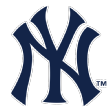 Torres is out for the year after a freak elbow injury but it doesn't affect anything but his timetable; he probably would have come up this year, but instead we won't see him until next spring or maybe summer. He had already reached Triple-A at age 20 and makes hard contact everywhere he plays, using the whole field well, showing tremendous instincts at shortstop.
Torres is out for the year after a freak elbow injury but it doesn't affect anything but his timetable; he probably would have come up this year, but instead we won't see him until next spring or maybe summer. He had already reached Triple-A at age 20 and makes hard contact everywhere he plays, using the whole field well, showing tremendous instincts at shortstop.
 3. Rafael Devers, 3B, Boston Red Sox
3. Rafael Devers, 3B, Boston Red Sox
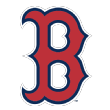 Devers hit 22 homers in his first two years in the U.S. in over 1,000 plate appearances. This year, at age 20 in Double-A, he has 18 homers in 320 plate appearances, along with a .300/.369/.575 line and solid defense at third. He should be in Pawtucket already so the Red Sox can at least consider recalling him in September.
Devers hit 22 homers in his first two years in the U.S. in over 1,000 plate appearances. This year, at age 20 in Double-A, he has 18 homers in 320 plate appearances, along with a .300/.369/.575 line and solid defense at third. He should be in Pawtucket already so the Red Sox can at least consider recalling him in September.
 4. Victor Robles, OF, Washington Nationals
4. Victor Robles, OF, Washington Nationals
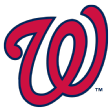 Robles is still more tools than feel or instincts, but it hasn't limited his performance one iota, as he's raking in the pitcher-friendly Carolina League at age 20 while playing above-average defense in center.
Robles is still more tools than feel or instincts, but it hasn't limited his performance one iota, as he's raking in the pitcher-friendly Carolina League at age 20 while playing above-average defense in center.
 5. Eloy Jimenez, OF, Chicago White Sox
5. Eloy Jimenez, OF, Chicago White Sox
Traded from Cubs to White Sox on July 13 as part of Jose Quintana deal
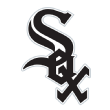 Jimenez's .271/.351/.490 line is even more impressive when you consider that Myrtle Beach has historically been among Class A's best pitchers' parks, but it's unsurprising given his light-tower power.
Jimenez's .271/.351/.490 line is even more impressive when you consider that Myrtle Beach has historically been among Class A's best pitchers' parks, but it's unsurprising given his light-tower power.
 6. Francisco Mejia, C, Cleveland Indians
6. Francisco Mejia, C, Cleveland Indians
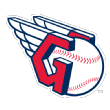 Mejia is hitting .341/.372/.525 across three levels since the start of 2016, and he's a catcher. If I felt better about his receiving and game-calling, I might have him at No. 1 overall.
Mejia is hitting .341/.372/.525 across three levels since the start of 2016, and he's a catcher. If I felt better about his receiving and game-calling, I might have him at No. 1 overall.
 7. Michael Kopech, RHP, Chicago White Sox
7. Michael Kopech, RHP, Chicago White Sox
 Kopech might have the easiest 80-grade fastball in baseball -- and it has some life beyond just coming in at 100 mph -- along with some early feel for a slider and changeup, a workhorse build and repeatable delivery. He's still walking too many guys, but there's no physical reason he can't get to average control, and around injury and a suspension he has racked up only 213 pro innings.
Kopech might have the easiest 80-grade fastball in baseball -- and it has some life beyond just coming in at 100 mph -- along with some early feel for a slider and changeup, a workhorse build and repeatable delivery. He's still walking too many guys, but there's no physical reason he can't get to average control, and around injury and a suspension he has racked up only 213 pro innings.
 8. Vladimir Guerrero Jr., 3B, Toronto Blue Jays
8. Vladimir Guerrero Jr., 3B, Toronto Blue Jays
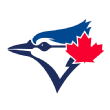 Vlad might be his father with patience. He's already outperforming his dad in several key areas while playing in low-A at a year younger than when the elder Vlad was there. He's OK at third base now, but his body is already big and he'll have to work on conditioning to stay on the dirt.
Vlad might be his father with patience. He's already outperforming his dad in several key areas while playing in low-A at a year younger than when the elder Vlad was there. He's OK at third base now, but his body is already big and he'll have to work on conditioning to stay on the dirt.
 9. Ronald Acuna, OF, Atlanta Braves
9. Ronald Acuna, OF, Atlanta Braves
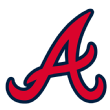 Acuna is blessed with all kinds of quickness -- fast hands, quick bat, running speed -- and has succeeded even where his approach and instincts haven't caught up to the rest of his toolset. He has cooled off in Double-A after a scorching start, but at age 19 even holding his own at that level would be remarkable -- and it earned him a promotion to Triple-A.
Acuna is blessed with all kinds of quickness -- fast hands, quick bat, running speed -- and has succeeded even where his approach and instincts haven't caught up to the rest of his toolset. He has cooled off in Double-A after a scorching start, but at age 19 even holding his own at that level would be remarkable -- and it earned him a promotion to Triple-A.
 10. Mitch Keller, RHP, Pittsburgh Pirates
10. Mitch Keller, RHP, Pittsburgh Pirates
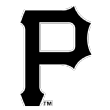 Keller just came back two weeks ago after missing about a month because of a back strain, but he otherwise has been what he was last year: a potential ace with a plus fastball/plus breaking ball combo, a changeup that's at least solid-average, and above-average command.
Keller just came back two weeks ago after missing about a month because of a back strain, but he otherwise has been what he was last year: a potential ace with a plus fastball/plus breaking ball combo, a changeup that's at least solid-average, and above-average command.
 11. Walker Buehler, RHP, Los Angeles Dodgers
11. Walker Buehler, RHP, Los Angeles Dodgers
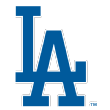 The Dodgers have been appropriately aggressive with Buehler, who is 22 with multiple plus pitches and plus command but is probably going to hit an innings cap later this summer since it's his first full season pitching after 2015 Tommy John surgery. The only real knock here is durability -- between the operation and his slight build, there's some reason to think he's not a 200-inning starter, but his stuff is just so good and his feel so advanced that it seems like nitpicking.
The Dodgers have been appropriately aggressive with Buehler, who is 22 with multiple plus pitches and plus command but is probably going to hit an innings cap later this summer since it's his first full season pitching after 2015 Tommy John surgery. The only real knock here is durability -- between the operation and his slight build, there's some reason to think he's not a 200-inning starter, but his stuff is just so good and his feel so advanced that it seems like nitpicking.
 12. Alex Verdugo, OF, Los Angeles Dodgers
12. Alex Verdugo, OF, Los Angeles Dodgers
 It's an unconventional approach, but it's working -- Verdugo is hitting .346/.416/.463 as the youngest regular in the Pacific Coast League (Triple-A), ranking fourth among qualifiers in average and OBP. He's going to force the Dodgers' hand at some point, now that Chris Taylor's bat is coming back to earth.
It's an unconventional approach, but it's working -- Verdugo is hitting .346/.416/.463 as the youngest regular in the Pacific Coast League (Triple-A), ranking fourth among qualifiers in average and OBP. He's going to force the Dodgers' hand at some point, now that Chris Taylor's bat is coming back to earth.
 13. Yoan Moncada, 2B, Chicago White Sox
13. Yoan Moncada, 2B, Chicago White Sox
 Moncada continues to show power and speed and make hard contact in Triple-A, but he has struck out 28 percent of the time -- and with the way he wraps his bat, that's going to continue to be an issue. Even if that never changes, however, he should still be an above-average regular at second, where scouts say he has improved his defensive work, with the power/speed combo and the benefit of making hard contact when he does put the ball in play.
Moncada continues to show power and speed and make hard contact in Triple-A, but he has struck out 28 percent of the time -- and with the way he wraps his bat, that's going to continue to be an issue. Even if that never changes, however, he should still be an above-average regular at second, where scouts say he has improved his defensive work, with the power/speed combo and the benefit of making hard contact when he does put the ball in play.
 14. Nick Senzel, 3B, Cincinnati Reds
14. Nick Senzel, 3B, Cincinnati Reds
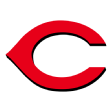 Senzel looks like a sure thing, high-floor sort of player, an everyday guy at third who hits for average with a high OBP, but he hasn't hit for any power this year and his swing isn't really geared toward it. It's easy to see him in a big league lineup next year on Opening Day; I just don't know if there's All-Star ceiling here.
Senzel looks like a sure thing, high-floor sort of player, an everyday guy at third who hits for average with a high OBP, but he hasn't hit for any power this year and his swing isn't really geared toward it. It's easy to see him in a big league lineup next year on Opening Day; I just don't know if there's All-Star ceiling here.
 15. Fernando Tatis Jr., SS, San Diego Padres
15. Fernando Tatis Jr., SS, San Diego Padres
 Tatis has been overshadowed a bit by the presence of Vlad Guerrero Jr. in the same league in the first half, but he's having a hell of a year in his own right. At just 18, Tatis is hitting .277/.373/.492, leading the Midwest League in walks, ranking fourth in the league in homers and fifth in stolen bases, while also playing solid defense at short.
Tatis has been overshadowed a bit by the presence of Vlad Guerrero Jr. in the same league in the first half, but he's having a hell of a year in his own right. At just 18, Tatis is hitting .277/.373/.492, leading the Midwest League in walks, ranking fourth in the league in homers and fifth in stolen bases, while also playing solid defense at short.
 16. Kyle Tucker, OF, Houston Astros
16. Kyle Tucker, OF, Houston Astros
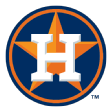 The fifth overall pick in 2015, three picks after Houston took Alex Bregman, Tucker ripped through the Carolina League at age 20, and in only 32 games in Double-A, he has eight home runs, tying him for 19th in the Texas League. There is some length to his swing, but it hasn't mattered yet, and while he has played all over the outfield, he's going to end up in a corner.
The fifth overall pick in 2015, three picks after Houston took Alex Bregman, Tucker ripped through the Carolina League at age 20, and in only 32 games in Double-A, he has eight home runs, tying him for 19th in the Texas League. There is some length to his swing, but it hasn't mattered yet, and while he has played all over the outfield, he's going to end up in a corner.
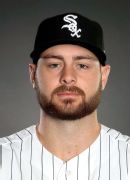 17. Lucas Giolito, RHP, Chicago White Sox
17. Lucas Giolito, RHP, Chicago White Sox
 There have been a lot of ups and downs in Triple-A for Giolito as the White Sox try to undo the delivery changes wrought by Washington, but he has been pitching better in the past seven weeks, with his velocity back up to the mid-90s, thanks in part to some help from James Shields when the big leaguer saw Giolito during a recent rehab assignment.
There have been a lot of ups and downs in Triple-A for Giolito as the White Sox try to undo the delivery changes wrought by Washington, but he has been pitching better in the past seven weeks, with his velocity back up to the mid-90s, thanks in part to some help from James Shields when the big leaguer saw Giolito during a recent rehab assignment.
 18. Brendan Rodgers, SS, Colorado Rockies
18. Brendan Rodgers, SS, Colorado Rockies
 Rodgers can really play short and he looks as if he's going to hit for average with some pop, but he has spent most of his pro career to date in two great hitters' parks (Asheville and Lancaster), so his stats to date might be a little misleading. He's in Double-A now at age 20 and his performance there will tell us a lot, while the tougher pitching will also force him to work on his patience at the plate.
Rodgers can really play short and he looks as if he's going to hit for average with some pop, but he has spent most of his pro career to date in two great hitters' parks (Asheville and Lancaster), so his stats to date might be a little misleading. He's in Double-A now at age 20 and his performance there will tell us a lot, while the tougher pitching will also force him to work on his patience at the plate.
 19. Cal Quantrill, RHP, San Diego Padres
19. Cal Quantrill, RHP, San Diego Padres
 Quantrill, taken eighth overall in the 2016 Rule 4 draft, has had a solid first full year in pro ball considering that it's also his first full year back after 2015 Tommy John surgery. He's showing good command of a four-pitch mix with an above-average fastball and changeup.
Quantrill, taken eighth overall in the 2016 Rule 4 draft, has had a solid first full year in pro ball considering that it's also his first full year back after 2015 Tommy John surgery. He's showing good command of a four-pitch mix with an above-average fastball and changeup.
 20. Jason Groome, LHP, Boston Red Sox
20. Jason Groome, LHP, Boston Red Sox
 Groome's first full season in pro ball hasn't gone quite according to script, as he tried to pitch through injury in April and ended up missing two months. But since his return, his stuff has been there, sitting 92-93 mph and touching 96 with his fastball. He also throws a plus curveball but with a little effort to his delivery.
Groome's first full season in pro ball hasn't gone quite according to script, as he tried to pitch through injury in April and ended up missing two months. But since his return, his stuff has been there, sitting 92-93 mph and touching 96 with his fastball. He also throws a plus curveball but with a little effort to his delivery.
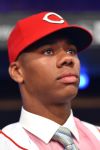 21. Hunter Greene, RHP, Cincinnati Reds
21. Hunter Greene, RHP, Cincinnati Reds
 The best prospect in this year's draft class will touch 100 mph and sit in the 96 range with as easy and effortless a delivery as you'll find, and he's an incredible athlete who won't turn 18 until next month. Now the real work begins -- tightening up his slider (and perhaps ditching the curveball) and developing some real fastball command rather than just control.
The best prospect in this year's draft class will touch 100 mph and sit in the 96 range with as easy and effortless a delivery as you'll find, and he's an incredible athlete who won't turn 18 until next month. Now the real work begins -- tightening up his slider (and perhaps ditching the curveball) and developing some real fastball command rather than just control.
 22. Brent Honeywell, RHP, Tampa Bay Rays
22. Brent Honeywell, RHP, Tampa Bay Rays
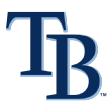 Honeywell should be in the majors soon, as his arsenal is certainly ready and he could help the Rays in a number of different roles. He's known for the screwball, which he flashed Sunday in the Futures Game, but I think his changeup is his best pitch and most likely to be his primary off-speed weapon in the majors, helping him get more swings and misses on his 92-95 mph fastball too.
Honeywell should be in the majors soon, as his arsenal is certainly ready and he could help the Rays in a number of different roles. He's known for the screwball, which he flashed Sunday in the Futures Game, but I think his changeup is his best pitch and most likely to be his primary off-speed weapon in the majors, helping him get more swings and misses on his 92-95 mph fastball too.
 23. Dom Smith, 1B, New York Mets
23. Dom Smith, 1B, New York Mets
 Smith is doing what he should be doing in the hitter-friendly environment of Las Vegas and the PCL, hitting .330/.382/.500 in the first half with 12 homers, just two off his career best.
Smith is doing what he should be doing in the hitter-friendly environment of Las Vegas and the PCL, hitting .330/.382/.500 in the first half with 12 homers, just two off his career best.
 24. Leody Taveras, OF, Texas Rangers
24. Leody Taveras, OF, Texas Rangers
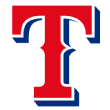 The second-youngest regular in the Sally League this year, Taveras has made a ton of contact but doesn't yet have the strength to do much with it. He has the third-most plate appearances in the Sally League but ranks 71st in strikeouts. Scouts praise his instincts and he still has a ton of physical projection ahead of him.
The second-youngest regular in the Sally League this year, Taveras has made a ton of contact but doesn't yet have the strength to do much with it. He has the third-most plate appearances in the Sally League but ranks 71st in strikeouts. Scouts praise his instincts and he still has a ton of physical projection ahead of him.
 25. Willy Adames, SS, Tampa Bay Rays
25. Willy Adames, SS, Tampa Bay Rays
 Adames continues to hold his own despite always being a little young for his levels. He won't turn 22 until September but has shown solid plate discipline and a little more power this year in Triple-A. A shortstop now, it's possible he'll move to another position when he's called up now that the Rays have Adeiny Hechavarria, an elite defender, at short.
Adames continues to hold his own despite always being a little young for his levels. He won't turn 22 until September but has shown solid plate discipline and a little more power this year in Triple-A. A shortstop now, it's possible he'll move to another position when he's called up now that the Rays have Adeiny Hechavarria, an elite defender, at short.
 26. Kolby Allard, LHP, Atlanta Braves
26. Kolby Allard, LHP, Atlanta Braves
 Allard is just 19 but has a 2.88 ERA and 20 percent strikeout rate in Double-A this year, dominating left-handed hitters and also getting righties out with a three-pitch mix led by a plus curveball.
Allard is just 19 but has a 2.88 ERA and 20 percent strikeout rate in Double-A this year, dominating left-handed hitters and also getting righties out with a three-pitch mix led by a plus curveball.
 27. Carson Kelly, C, St. Louis Cardinals
27. Carson Kelly, C, St. Louis Cardinals
 That extension the Cards gave Yadier Molina might have been a little hasty, as Kelly is probably going to be ready to be the Cards' primary catcher next year. He's still making tons of contact and is just one homer away from tying his career high. While no one is going to match Molina's reputation as a game-caller, Kelly continues to improve in all areas on defense.
That extension the Cards gave Yadier Molina might have been a little hasty, as Kelly is probably going to be ready to be the Cards' primary catcher next year. He's still making tons of contact and is just one homer away from tying his career high. While no one is going to match Molina's reputation as a game-caller, Kelly continues to improve in all areas on defense.
 28. Yadier Alvarez, RHP, Los Angeles Dodgers
28. Yadier Alvarez, RHP, Los Angeles Dodgers
 Alvarez ranks up there with Kopech among starters with the best stuff in the minors, but Alvarez doesn't miss as many bats as he should and his conditioning has been a problem this year.
Alvarez ranks up there with Kopech among starters with the best stuff in the minors, but Alvarez doesn't miss as many bats as he should and his conditioning has been a problem this year.
 29. Lewis Brinson, CF, Milwaukee Brewers
29. Lewis Brinson, CF, Milwaukee Brewers
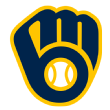 Brinson is back in the minors, so he qualifies for this list again but could lose his eligibility with another 100 major league at-bats this year. His athleticism and bat speed have carried him up the minors, although I think he's going to have a long adjustment period in the majors, with the eventual ceiling of a plus defender in center who hits 30 homers a year.
Brinson is back in the minors, so he qualifies for this list again but could lose his eligibility with another 100 major league at-bats this year. His athleticism and bat speed have carried him up the minors, although I think he's going to have a long adjustment period in the majors, with the eventual ceiling of a plus defender in center who hits 30 homers a year.
 30. Nick Gordon, SS, Minnesota Twins
30. Nick Gordon, SS, Minnesota Twins
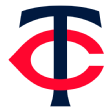 Gordon continues to hit and to play solid defense at short, with a little more power already this year (six homers, after hitting only five in his first three years in pro ball). He's a high-floor prospect whose exceptional feel for the game will help him exceed his tools.
Gordon continues to hit and to play solid defense at short, with a little more power already this year (six homers, after hitting only five in his first three years in pro ball). He's a high-floor prospect whose exceptional feel for the game will help him exceed his tools.
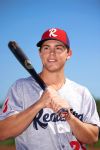 31. Scott Kingery, 2B, Philadelphia Phillies
31. Scott Kingery, 2B, Philadelphia Phillies
 Kingery hit eight homers in his first two years in pro ball, and is now at 22 this year even with a midseason promotion from Double-A to Triple-A. He's a 70 defender at second base and a 70 runner, so it won't take much power to make him an above-average regular, with lack of patience really the only flaw in his game right now.
Kingery hit eight homers in his first two years in pro ball, and is now at 22 this year even with a midseason promotion from Double-A to Triple-A. He's a 70 defender at second base and a 70 runner, so it won't take much power to make him an above-average regular, with lack of patience really the only flaw in his game right now.
 32. Ozhaino Albies, SS/2B, Atlanta Braves
32. Ozhaino Albies, SS/2B, Atlanta Braves
 Albies is a natural shortstop who has moved to second primarily because of the presence of Dansby Swanson, which dings Albies' value slightly, although in the hypothetical instance of a trade he could probably go back to playing short regularly.
Albies is a natural shortstop who has moved to second primarily because of the presence of Dansby Swanson, which dings Albies' value slightly, although in the hypothetical instance of a trade he could probably go back to playing short regularly.
 33. Chance Sisco, C, Baltimore Orioles
33. Chance Sisco, C, Baltimore Orioles
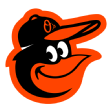 Sisco is a high-contact hitter without more than average power, and an above-average receiver with an average arm, all of which combines to make him a likely regular behind the plate with a limited ceiling unless he brings some more power into his game.
Sisco is a high-contact hitter without more than average power, and an above-average receiver with an average arm, all of which combines to make him a likely regular behind the plate with a limited ceiling unless he brings some more power into his game.
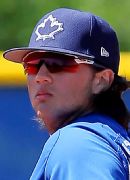 34. Bo Bichette, SS, Toronto Blue Jays
34. Bo Bichette, SS, Toronto Blue Jays
 Bichette has a big bat-wrap and almost wild approach, but he has outstanding hand-eye coordination and plus bat speed, allowing him to hit .384/.448/.623 before a promotion to high-A earlier this week. He's most likely a second baseman in the long term.
Bichette has a big bat-wrap and almost wild approach, but he has outstanding hand-eye coordination and plus bat speed, allowing him to hit .384/.448/.623 before a promotion to high-A earlier this week. He's most likely a second baseman in the long term.
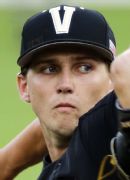 35. Kyle Wright, RHP, Atlanta Braves
35. Kyle Wright, RHP, Atlanta Braves
 Wright, the fifth overall pick in last month's draft, was the best college pitcher in the class in my opinion, bringing a plus slider and 92-96 mph fastball along with good command and a delivery he repeats well.
Wright, the fifth overall pick in last month's draft, was the best college pitcher in the class in my opinion, bringing a plus slider and 92-96 mph fastball along with good command and a delivery he repeats well.
 36. Forrest Whitley, RHP, Houston Astros
36. Forrest Whitley, RHP, Houston Astros
 The Astros' first pick (17th overall) in the 2016 draft out of a San Antonio high school, Whitley is already in high-A after an impressive run through low-A that saw him strike out 34 percent of the Midwest League batters he faced.
The Astros' first pick (17th overall) in the 2016 draft out of a San Antonio high school, Whitley is already in high-A after an impressive run through low-A that saw him strike out 34 percent of the Midwest League batters he faced.
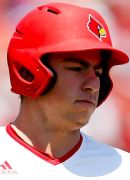 37. Brendan McKay, LHP/1B, Tampa Bay Rays
37. Brendan McKay, LHP/1B, Tampa Bay Rays
 The Golden Spikes Award winner and fourth overall pick is going to try to play both positions in the Rays' system, although I doubt we'll see him on a mound until next year; I think eventually he'll have to focus on pitching or hitting to the exclusion of the other, but I could see him succeeding at either role.
The Golden Spikes Award winner and fourth overall pick is going to try to play both positions in the Rays' system, although I doubt we'll see him on a mound until next year; I think eventually he'll have to focus on pitching or hitting to the exclusion of the other, but I could see him succeeding at either role.
38. Corbin Burnes, RHP, Milwaukee Brewers
 Milwaukee's fourth-round pick from 2016 has exploded on the minors this year, throwing 92-95 mph and touching 97, as well as showing a plus changeup and two breaking balls. He has a 1.06 ERA now across high-A and Double-A, thanks to his outstanding control.
Milwaukee's fourth-round pick from 2016 has exploded on the minors this year, throwing 92-95 mph and touching 97, as well as showing a plus changeup and two breaking balls. He has a 1.06 ERA now across high-A and Double-A, thanks to his outstanding control.
 39. Luiz Gohara, LHP, Atlanta Braves
39. Luiz Gohara, LHP, Atlanta Braves
 Gohara has been throwing to 99 mph and also shows a power slider, but the biggest news for him this year is durability, as the 20-year-old Brazilian, who's built like CC Sabathia (current version), had never reached 70 innings in any full season before this year.
Gohara has been throwing to 99 mph and also shows a power slider, but the biggest news for him this year is durability, as the 20-year-old Brazilian, who's built like CC Sabathia (current version), had never reached 70 innings in any full season before this year.
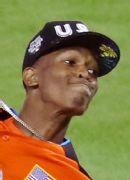 40. Triston McKenzie, RHP, Cleveland Indians
40. Triston McKenzie, RHP, Cleveland Indians
 It's all still projection for McKenzie, listed at 6-foot-6 and 165 pounds, and looking every bit of it, but he's already missing tons of bats (32 percent) as a 19-year-old pitching in high-A thanks to his extension out front and a low-90s fastball.
It's all still projection for McKenzie, listed at 6-foot-6 and 165 pounds, and looking every bit of it, but he's already missing tons of bats (32 percent) as a 19-year-old pitching in high-A thanks to his extension out front and a low-90s fastball.
 41. Ian Anderson, RHP, Atlanta Braves
41. Ian Anderson, RHP, Atlanta Braves
 The third overall pick from last year's draft has had some ups and downs in his first full pro season but is showing the same arsenal and delivery that had him projected as a No. 2 or 3 starter out of high school.
The third overall pick from last year's draft has had some ups and downs in his first full pro season but is showing the same arsenal and delivery that had him projected as a No. 2 or 3 starter out of high school.
42. Juan Soto, OF, Washington Nationals
 This is a bit of a projection pick, as Soto had fewer than 100 plate appearances this year before an ankle injury in early May put him on the shelf, but the powerful 18-year-old impressed scouts in April with his approach against older pitching.
This is a bit of a projection pick, as Soto had fewer than 100 plate appearances this year before an ankle injury in early May put him on the shelf, but the powerful 18-year-old impressed scouts in April with his approach against older pitching.
 43. Franklin Perez, RHP, Houston Astros
43. Franklin Perez, RHP, Houston Astros
 Just 19 years old and playing in high-A, Perez will show three potential above-average pitches and already has above-average control, lacking the huge upside of a Whitley but with a high floor of his own.
Just 19 years old and playing in high-A, Perez will show three potential above-average pitches and already has above-average control, lacking the huge upside of a Whitley but with a high floor of his own.
 44. Kevin Newman, SS, Pittsburgh Pirates
44. Kevin Newman, SS, Pittsburgh Pirates
 Newman scuffled for a few weeks in May after he was hit in the head by a pitch -- returning to the lineup just 48 hours later -- but otherwise has been his usual high-contact, doubles-power self, with solid-average defense at shortstop.
Newman scuffled for a few weeks in May after he was hit in the head by a pitch -- returning to the lineup just 48 hours later -- but otherwise has been his usual high-contact, doubles-power self, with solid-average defense at shortstop.
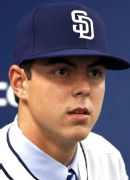 45. MacKenzie Gore, LHP, San Diego Padres
45. MacKenzie Gore, LHP, San Diego Padres
 The best lefty in this year's draft class, high school or college, and the third overall pick, Gore is extremely athletic with a plus breaking ball and solid-average fastball now with good projection for more velocity in time.
The best lefty in this year's draft class, high school or college, and the third overall pick, Gore is extremely athletic with a plus breaking ball and solid-average fastball now with good projection for more velocity in time.
46. Yordan Alvarez, 1B, Houston Astros
 Acquired from the Dodgers last summer for Josh Fields before Alvarez had even played a pro game, the Cuban first baseman has a quiet approach and big-power potential.
Acquired from the Dodgers last summer for Josh Fields before Alvarez had even played a pro game, the Cuban first baseman has a quiet approach and big-power potential.
47. Ryan McMahon, 1B/3B, Colorado Rockies
 The Rockies have moved McMahon around the infield to try to increase his versatility -- he's a natural third baseman, but that's kind of occupied in Denver at the moment -- with first base his most likely long-term position. After a strong start while repeating Double-A for Hartford, he has gone bananas in the altitude of Albuquerque, with power that's going to translate at the big league level, too.
The Rockies have moved McMahon around the infield to try to increase his versatility -- he's a natural third baseman, but that's kind of occupied in Denver at the moment -- with first base his most likely long-term position. After a strong start while repeating Double-A for Hartford, he has gone bananas in the altitude of Albuquerque, with power that's going to translate at the big league level, too.
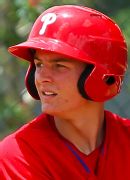 48. Mickey Moniak, OF, Philadelphia Phillies
48. Mickey Moniak, OF, Philadelphia Phillies
 Moniak is still just 19, so it's early to sound the alarm, but he hasn't looked good at the plate in low-A, especially against lefties (.214/.256/.298, not seeing breaking stuff at all), and seems less advanced as a hitter than expected, although he's still showing good range in center field.
Moniak is still just 19, so it's early to sound the alarm, but he hasn't looked good at the plate in low-A, especially against lefties (.214/.256/.298, not seeing breaking stuff at all), and seems less advanced as a hitter than expected, although he's still showing good range in center field.
49. Mike Soroka, RHP, Atlanta Braves
 I don't love the arm action, but Soroka has plus sink on his low-90s fastball and generates a lot of groundballs (51 percent this year in Double-A) while also rarely walking guys, giving him a high floor as long as he stays healthy.
I don't love the arm action, but Soroka has plus sink on his low-90s fastball and generates a lot of groundballs (51 percent this year in Double-A) while also rarely walking guys, giving him a high floor as long as he stays healthy.
50. Jack Flaherty, RHP, St. Louis Cardinals
 This former high school teammate of Giolito and Atlanta prospect Max Fried is already in Triple-A at age 21. He's working with plus command of a four-pitch mix but struggling just a little in the PCL due to the long ball.
This former high school teammate of Giolito and Atlanta prospect Max Fried is already in Triple-A at age 21. He's working with plus command of a four-pitch mix but struggling just a little in the PCL due to the long ball.
